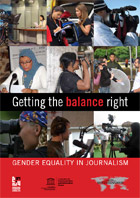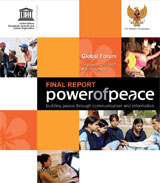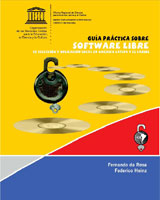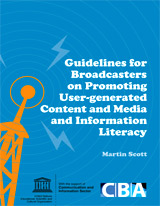ICTs could give a major boost to the economic, political and social empowerment of women, and the promotion of gender equality. But that potential will only be realized if the gender dimensions of the Information Society - in term's of users' needs, conditions of access, policies, applications and regulatory frameworks - are properly understood and adequately addressed by all stakeholders.
Publication year: 2003
This handbook was conceived during the planning for the UNESCO-Nepal Press Institute first Roundtable on The Gender Perspective in Conflict Reporting, conducted April 7-9, 2004 in Kathmandu, Nepal.
Publication year: 2005
This handbook is a timely, illustrated and easy-to-read guide and resource material for journalists. It evolved primarily out of a desire to equip all journalists with more information and understanding of gender issues in their work. It is addressed to media organisations, professional associations and journalists’ unions seeking to contribute to the goal of gender equality.
Publication year: 2009
The handbook is a reference and toolkit designed in three parts to support information and training needs by television producers and trainers. It draws examples from diverse productions including those of UNESCO’s Network of Young Television Producers on HIV and AIDS.
Publication year: 2009
UNESCO in association with the Government of Indonesia hosted an International Forum ‘Power of Peace’ in Bali, from 21 to 23 January 2007. Recognized thinkers and practitioners from the public and private sectors met to develop strategies to best harness the power of the media and ICTs in a practical and effective way for the purpose of building awareness, dialogue, harmony and peace.
Publication year: 2007
UNESCO and COMNET-IT have undertaken a first step in investigating the international state of the art of on-line governance, as exemplified by government-led initiatives for the electronic provision of information services, and of public input to the process of government. This first stage has been concluded with the present survey report resulting from data polled from sixty-two countries and an Internet-based facility from which the data can be queried and accessed (http://www.comnet.mt/Unesco/).
Publication year: 2000
Greenstone is a suite of software for building and distributing digital library collections. It provides a new way of organizing information and publishing it on the Internet or on CD-ROM. Greenstone is produced by the New Zealand Digital Library Project at the University of Waikato, and developed and distributed in cooperation with UNESCO and the Human Info NGO.
Publication year: 2007
Esta guía práctica presenta definiciones de lo que es el software libre de acuerdo a la Free Software Foundation y explica los procesos de desarrollo del software como una actividad basada en la comunidad.
Publication year: 2007
For the first time guidelines have been published on how broadcasters around the world can encourage audiences to produce better quality user-generated content and to improve media and information literacy. The new guidelines will also enable the public to become more media and information literate.
Publication year: 2009
Amidst the fast-changing broadcast media landscape, the present book examines many “balancing acts” which stake-holders both in government and private sector have to undertake to establish and maintain an effective and credible broadcast regulation mechanism.
Publication year: 2006
These Guidelines seek to set out the main principles that underlie the regulation of broadcasting and the aspects of broadcasting that can be regulated. The book is aimed at governments and regulators and sets out ‘best practice’ as informed by an international analysis of what currently is done.
Publication year: 2008
Regularly updated folder covering the election process in Iraq
Publication year: 2005
The present document, prepared by a CDNL Working Group chaired by Brian Lang, Chief Executive of the British Library, suggests guidelines for national libraries both in developing and developed countries on how to prepare proposals for the legal deposit of electronic publications and on how to house and maintain such publications.
Publication year: 2000
These Guidelines address decision makers in different positions at various levels, who - for a variety of purposes - want to design, plan and implement a terminology policy, which is geared towards a conscious, systematic and controlled approach to the creation, maintenance and use of terminology in/for defined user communities.
Publication year: 2005
These Guidelines form a small part of a far-seeing campaign by UNESCO to improve access to digital heritage for all the world’s peoples, and to ensure that the means of preserving their digital heritage are in the hands of every community.
Publication year: 2003












